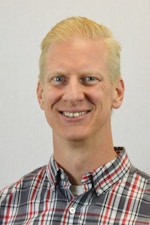Dr. Neil Christensen
- About
- Education
- Awards & Honors
- Selected Research
Current Courses
PHY 440.001 Advanced Electricity & Magnetism
PHY 390.016 Computational Research In Physics
PHY 340.001 Electricity And Magnetism II
PHY 490.016 Research Development in Physics
PHY 290.016 Research In Physics
Research Interests & Areas
My research is in the area of theoretical particle physics. Currently, I am interested in constructive amplitude methods. This is an alternative to and complementary to Feynman diagrams.
Feynman diagrams are derived from traditional field theory, which is constructed to be manifestly Lorentz invariant, symmetry group invariant, Hermitian and local. In order to achieve this, we must use fields that are product representations under the Lorentz group. This includes spinors (usually Dirac spinors), four vectors and combinations of these. The only fields that contain the right transformation properties for photons, gluons, W and Z bosons are vector fields. However, vector fields have four degrees of freedom, while photons and gluons only have two (positive and negative helicity) and W and Z bosons only have the three of a spin-1 particle. Therefore, in order to use a vector field for these particles, we must add extra unphysical degrees of freedom. These extra unphysical degrees of freedom would ruin the calculations of physical observables if not removed or cancelled. However, long ago it has been found that, if we "gauge" the symmetry groups for electroweak and strong transformations, the bad consequences of these extra unphysical degrees of freedom will exactly cancel.
Feynman diagrams result from gauged field theory. They have the nice properties of those field theories. They are manifestly Lorentz invariant, symmetry group invariant, Hermitian and local. However, as a consequence of the unphysical degrees of freedom, the contribution from the diagrams expands beyond what is physical. On the other hand, due to the gauged symmetries, these extra diagram contributions exactly cancel among themselves in gauge-invariant subsets of diagrams, leaving the physical result at the end. Although this has allowed the calculation of any scattering amplitude at any order in principle, it appears that it may be unnecessarily uneconomical and inefficient. It might be better to never add extra unphysical degrees of freedom and avoid the expansion of diagram contributions and avoid the required cancellation.
Recently, a new method for calculating scattering amplitudes has been emerging, where we never add extra unphysical degrees of freedom, and therefore, never need to have cancellations between diagrams in order to have physically meaningful results, and therefore, never need to "gauge" any symmetries. Indeed, each diagram in such a method is trivially gauge invariant. This new method is determined from the ground up, based on the symmetries. For this reason, it is called the "constructive amplitude" method. It turns out that the symmetries, including the Lorentz symmetry as well as the global symmetries of electromagnetism and the strong force, are sufficient to determine most of the fundamental vertices in the constructive amplitude method. We now have all the vertices for the Constructive Standard Model (CSM).
We are still developing the constructive amplitude method. We have calculated all the four-point amplitudes in the CSM and we have shown that it is perturbatively unitary at tree-level four-point. We have showed that it only includes four four-point vertices, as opposed to the seven four-point vertices of Feynman diagrams. We have seen that many of its amplitudes at this level are simpler, more economical and more efficient than their Feynman counterparts. This theory clearly is also Lorentz invariant, satisfies all the symmetries and is Hermitian. However, one very interesting place where constructive theory differs at a fundamental level from Feynman diagrams is that the vertices are non-local. They also involve on-shell methods for intermediate steps of the calculation, although they are correct both on-shell and off-shell at the end of the calculation. A current deficiency that we would like to understand better is why all the couplings are related to each other. This has an elegant explanation in gauge field theory, but not currently in constructive theory.
A listing of my publications can be found on the inSpire website.
